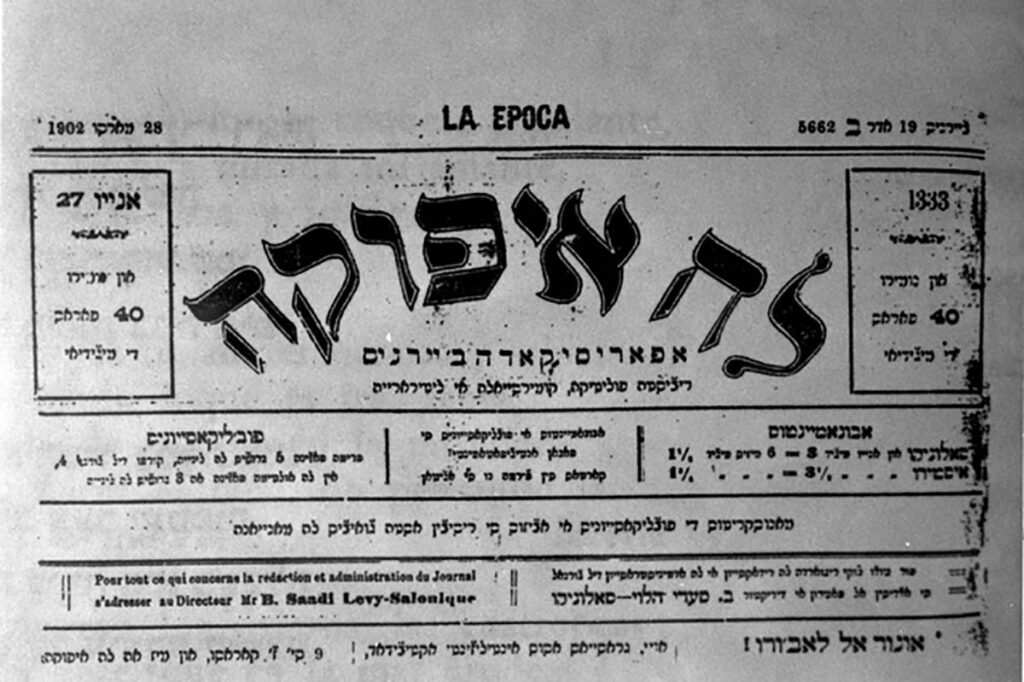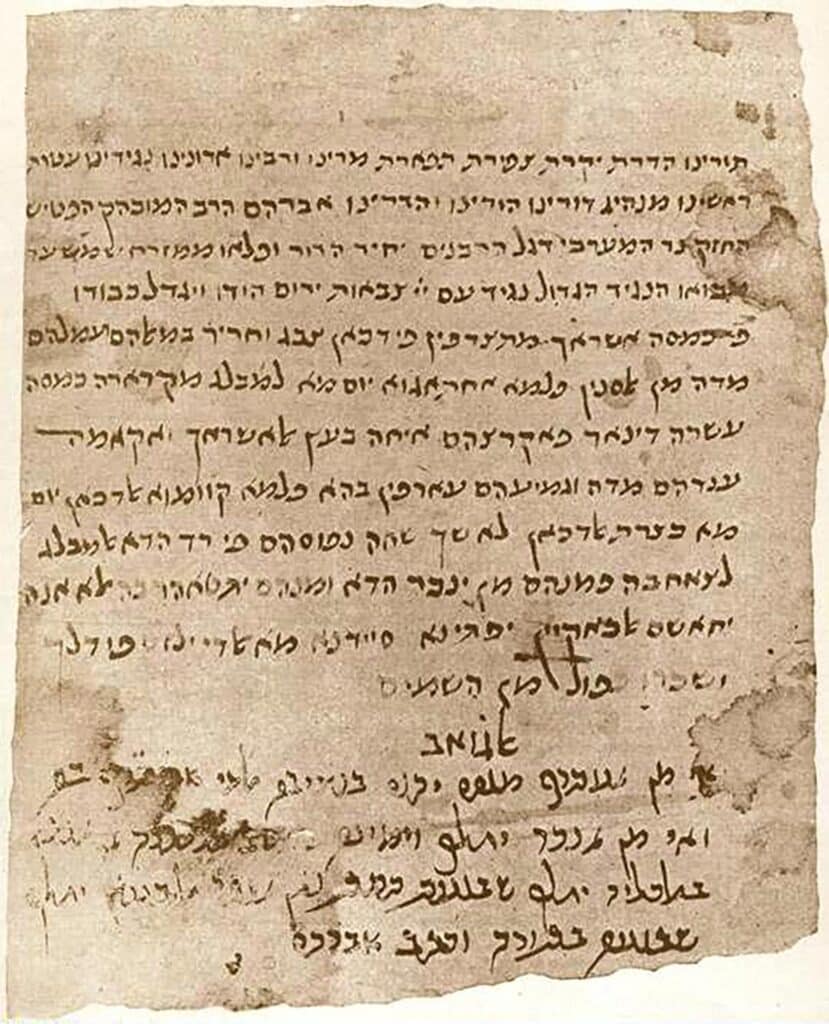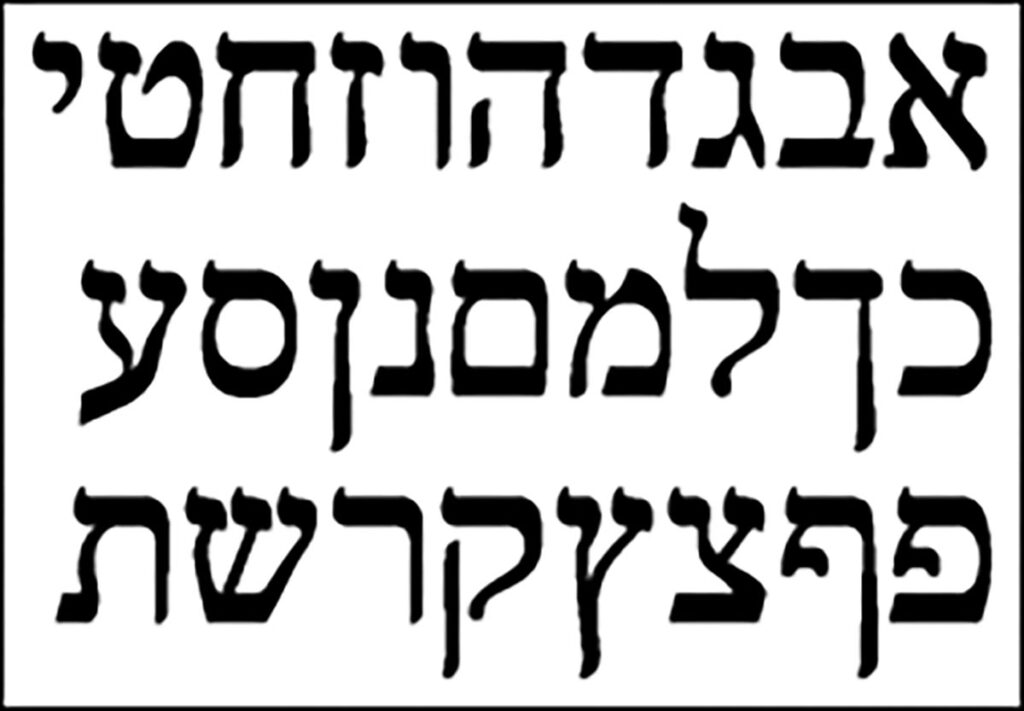Do Jews speak Jewish? It’s a question some Jews have fielded from curious non-Jews meeting a Jew for the first time. But what even is a Jewish language?
Considering that Jews have lived on nearly every continent, we’ve spoken — and continue to speak — many different languages, from English and Spanish to Urdu and Eskaleutian.
You’re likely familiar with chutzpah, nosh and schlep, all Jewish-influenced words that have made their way into the English language, but you’d be hard-pressed to find someone who says English is a Jewish language.
So what actually makes a language Jewish? Here are five Jewish languages and their origins to help us find out.
1. Yiddish
Yiddish has snuck so deeply into English vernacular that non-Jews might not even realize they’re speaking it while kvetching with the klutz next to them about schvitzing in the summer heat.
Test your Yiddish knowledge with these 18 essential Yiddish words and sayings.
Originating as a mix of medieval German written in Hebrew letters, Yiddish was the brainchild of 10th-century Jews making their way from northern Italy to the German Rhine Valley. These Jews became known as Ashkenazim, leveraging the Biblical name for the place we call northern Germany.
From the 14th to 17th centuries, these Ashkenazi Jews migrated east and incorporated Slavic elements with Hebrew and Aramaic influences, later adding words from Russian, Polish and especially Ukrainian.
Before the Holocaust, Yiddish dominated Ashkenazi Jewish culture. Its plays reverberated through local theaters, and its literature captivated readers with its unique mix of humor and heartbreak.
It was spoken so widely among Jewish immigrants to British Palestine that there was even discussion about making it an official language of the future Jewish state, until it was cast aside in favor of Hebrew — the language the state’s founders envisioned as representing the type of new, strong and self-sufficient Jew.
Even so, Yiddish literature and music continue to animate Jewish culture today. Ever heard of Fidler Afn Dakh? How about its English translation, “Fiddler on the Roof”?
The popular musical was originally a series of Yiddish stories that went on to become a Broadway hit and a Best Picture nominee at the 1972 Academy Awards. Ever danced to lively Klezmer tunes? You can thank the Yiddish language for that too.
With over 150,000 speakers in North America today, Yiddish is still strong and alive, with many learning it as their first language and using it as their primary form of communication. Given that “Yiddish” is actually the Yiddish translation of the word “Jewish,” speaking Yiddish actually is speaking Jewish!
2. Ladino
If you were to listen to this kind of music and guess which cultural group created it, you might not guess the Jews:
Far too often, people perceive Jews as white Europeans who eat bagels, babka and kugel. But while Yiddish was forming among Ashkenazi Jews, another Jewish community — the Sephardim — were developing their own Jewish language, Ladino.
Unlike Yiddish, there’s no Duolingo course on Ladino quite yet. Until then, here are some must-know Ladino sayings!
Scholars believe that Ladino began as a dialect of Spanish, with some Portuguese, Aramaic, Hebrew, and other local flavors added on. The separation of Spanish and Ladino happened when Queen Isabella and King Ferdinand expelled their Jewish population from Spain in 1492.
The Jews who chose to leave rather than assimilate made new homes in Amsterdam, North Africa, and the Middle East, where they developed entire new communities with their own unique cultures.
There, cut off from the speakers of Castilian Spanish and thrust together with populations speaking Arabic or Turkish, Ladino evolved, until it ended up sounding pretty distinct from Spanish.

Sadly, when former hubs of Ladino were destroyed in the Holocaust, the language took a major hit. When it fell into the category of endangered languages, the state of Israel established an entire governmental program dedicated to reviving it.
Today, anywhere between 60,000 to 400,000 people speak Ladino, and the language boasts a profuse collection of literature and music that still enriches many Sephardic Shabbat tables with its beauty.
You can hear smatterings of the centuries-old language throughout the 2021 Israeli TV series “The Beauty Queen of Jerusalem.”
3. Aramaic
The oldest continuously spoken and written language in the Middle East, Aramaic dominated the ancient world.
Surrounded by the Aramaic of their neighbors, the Jews of the Land of Israel and Mesopotamia quickly adopted Aramaic as their daily spoken language too, while Hebrew remained a language of religion, government, and the upper class.
By the third century CE, the study houses of the Talmudic rabbis echoed with debates in Aramaic. It wasn’t until four centuries later, when the Muslims came riding through the region speaking Arabic, that Aramaic started dying out.
Even today, the Jews of Kurdistan still speak Jabali, which is a modern form of Jewish Aramaic. Iraqi Christians also continue to speak Aramaic as their daily language — though not the Judeo-Aramaic of the Talmud.
4. Judeo…You Name It
For nearly every community in which Jews have lived, there’s another Jewish language. For example, Judeo-Arabic dialects sprouted from all around the Arabic-speaking world, stretching from Iraq and Yemen in the East all the way to Spain and Morocco in the West.

Written in Hebrew characters with elements of Hebrew and Aramaic vocabulary and grammar, these dialects became so entrenched in the Arab-Jewish population that even great scholars like Maimonides used them.
Jews were spread out so widely in Arabic-speaking areas that a second form of Judeo-Arabic, sometimes called Judeo-Amazigh (also known as Berber), emerged. Mostly used by rural Jews engaging in trade with their Muslim neighbors, Judeo-Amazigh became a second language for Jews living in Libya, Algeria and Morocco.
There’s also Haketia, a mix of Spanish and Judeo-Moroccan Arabic. Judeo-Malayalam and Judeo-Marathi developed among Indian Jews. Farsi inspired Judeo-Persian, and Central Asian Jews created Judeo-Tadjik and Judeo-Tatic.
Linguists have identified many more languages which animate the lives and speech of Jews across the world. In fact, Moroccan Jews in Israel can still tune in to a Judeo-Arabic show on Israeli radio today.
5. Hebrew
The language of Judaism’s most ancient and revered texts, Hebrew is arguably the most quintessential Jewish language. Known as “lashon hakodesh” — the holy language — many believe it’s not only the OG Jewish language, but the OG language of the world.
According to Jewish tradition, it’s the language God used to speak the world into existence, and the language all of mankind spoke before God scrambled all of the languages after the Tower of Babel.
There are entire books dedicated to understanding the power of each letter, and a whole method of Biblical interpretation which assigns a number value to each letter and derives connections between words containing the same numerical total.
Throughout Jewish history, Hebrew consistently remained a language of prayer and study. In the late 1700s, zealous members of the Jewish Enlightenment tried to revive it as a modern spoken language.
However, the full revival didn’t take place until Eliezer Ben-Yehuda took on the mission in the late 1800s, inspired by the Zionist vision of Jews speaking their native language in their own land.

By 1922, Hebrew was so widespread that the British Mandate recognized it as the official language of Jews in Palestine. The founders of Israel regarded it as so central to their conception of the new Israeli Jew that they persuaded Jewish immigrants to take on new Hebrew names.
Like all languages, it’s gone through many makeovers, so while the Bible is pretty intelligible to a modern Hebrew speaker, the language has had to reckon with new words for new concepts, and borrows heavily from Arabic and English.
As our world has become more and more globalized, the isolation which nurtured the creation of these localized languages has all but disappeared. Most Jewish languages now fall into the category of endangered — languages at risk of extinction.
The horrific destruction of the Holocaust and the expulsions of Jews from Muslim lands in the 20th Century only accelerated this sad trend. And yet, Yiddish debates still wind through the streets of Brooklyn. Ladino tunes still rise up from Sephardic Shabbat tables. The guttural rhythm of Judeo-Arabic still drifts through Israeli radios.
Jewish micro-communities still bring their unique culture and traditions to the countries they find themselves in, and proud Jews continue to keep the languages of their ancestors alive.
